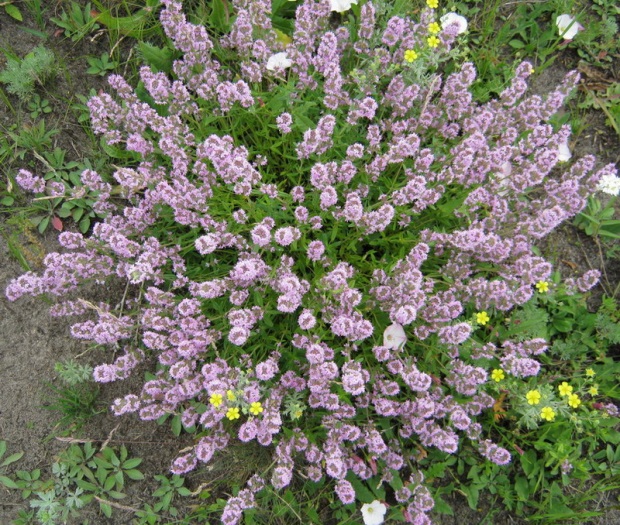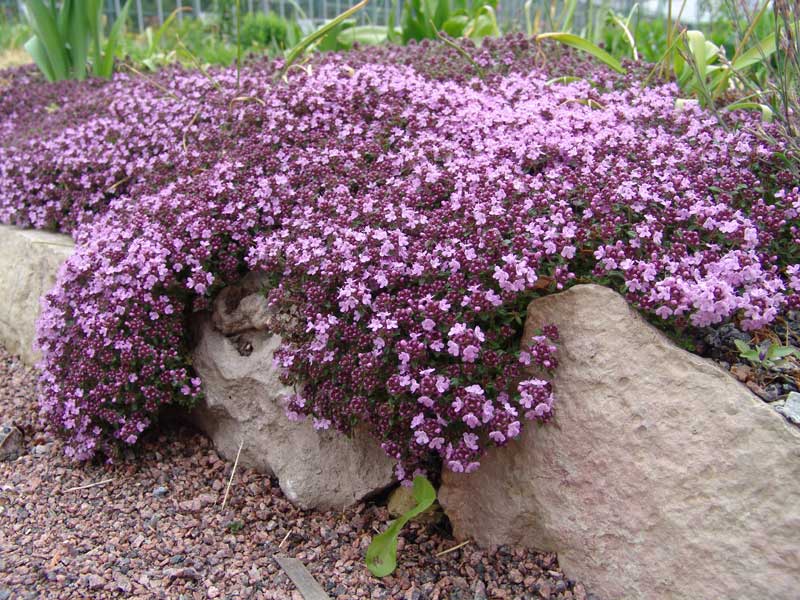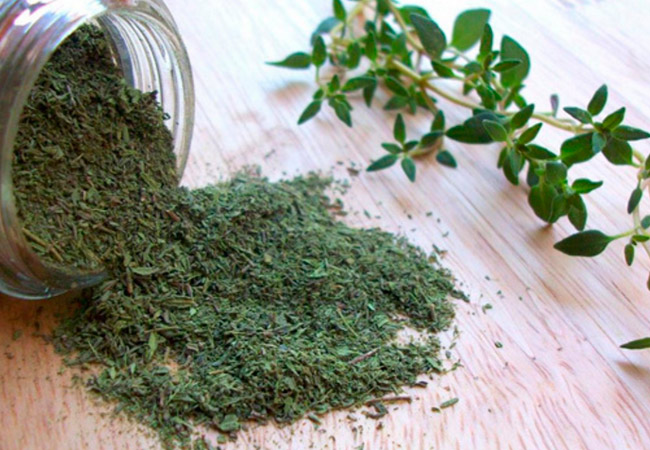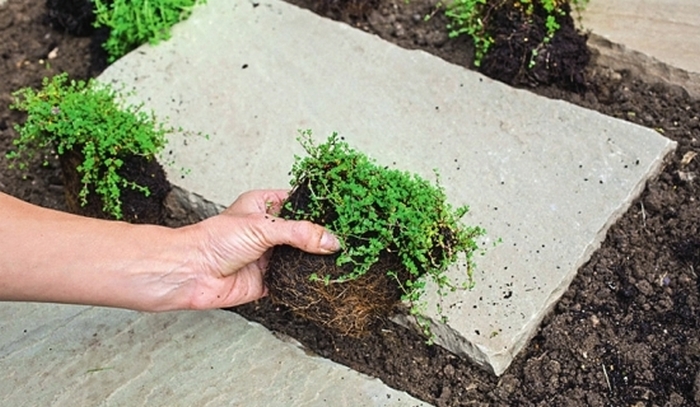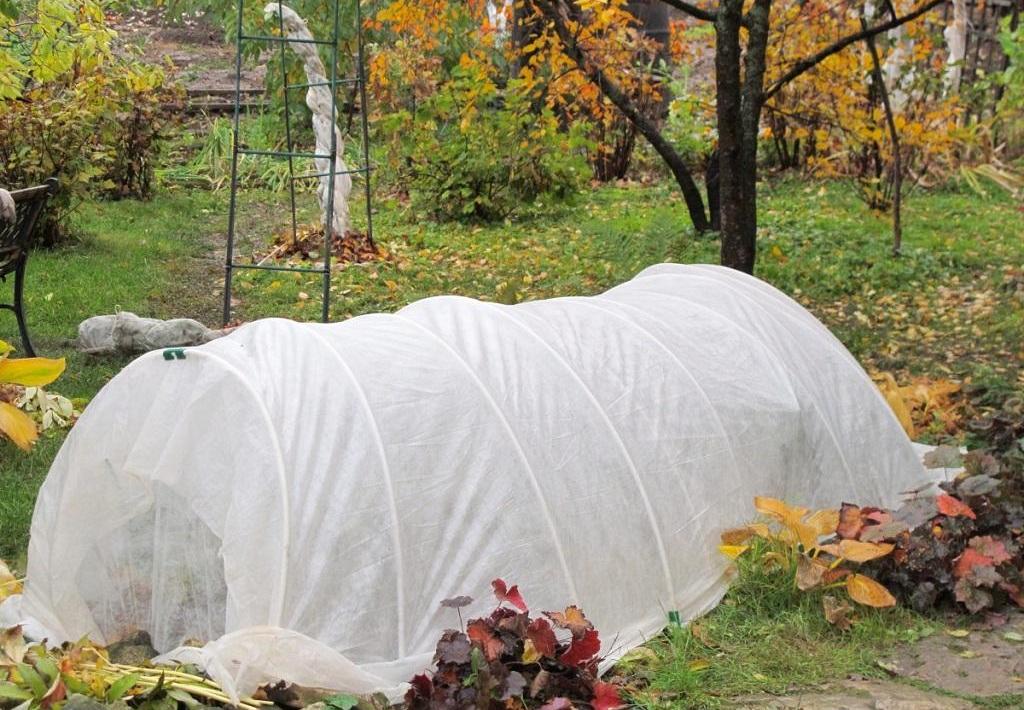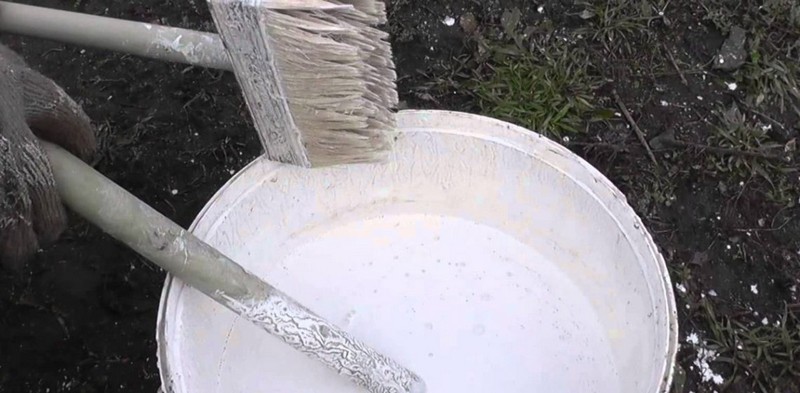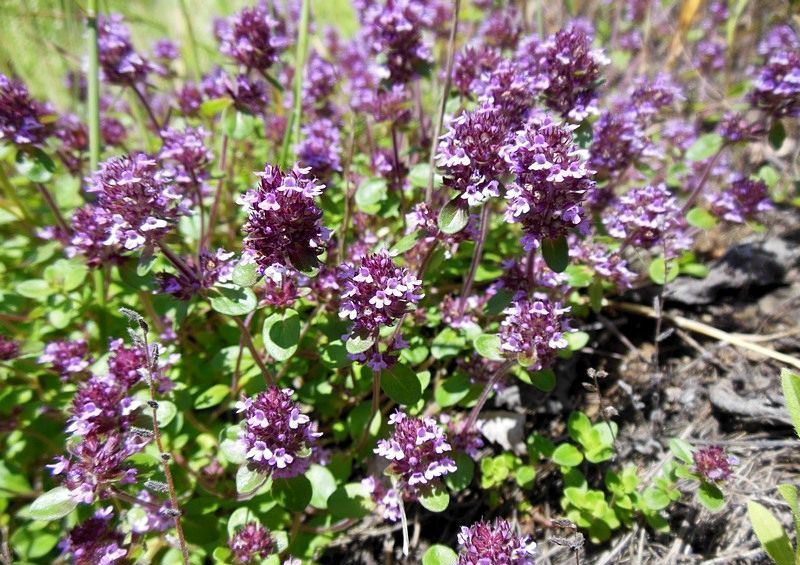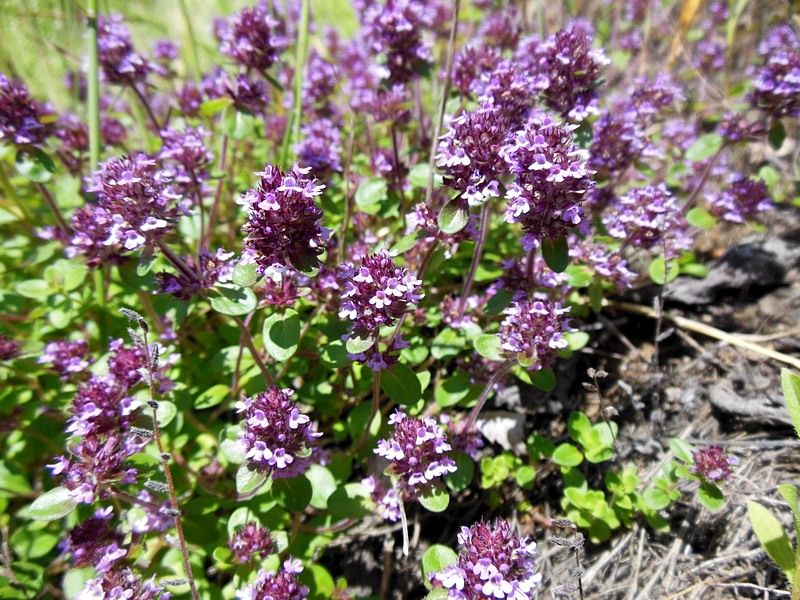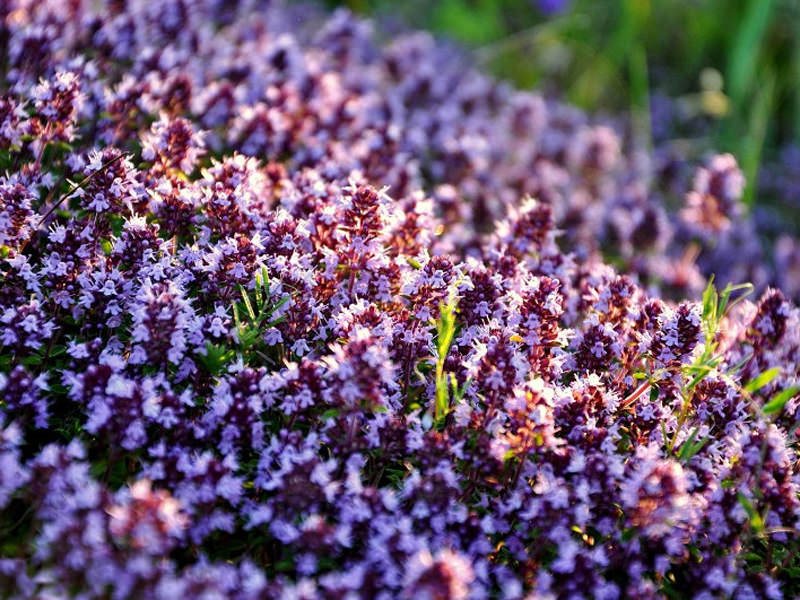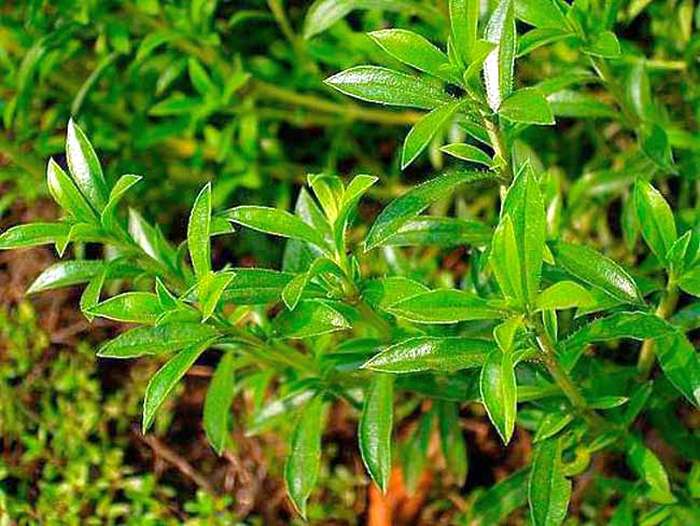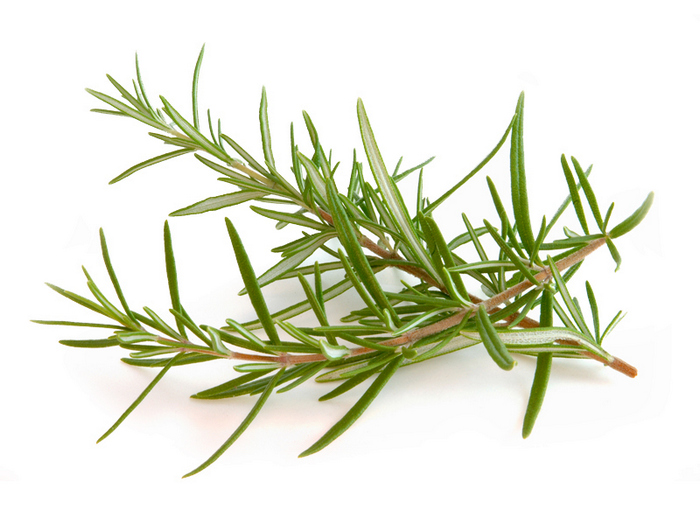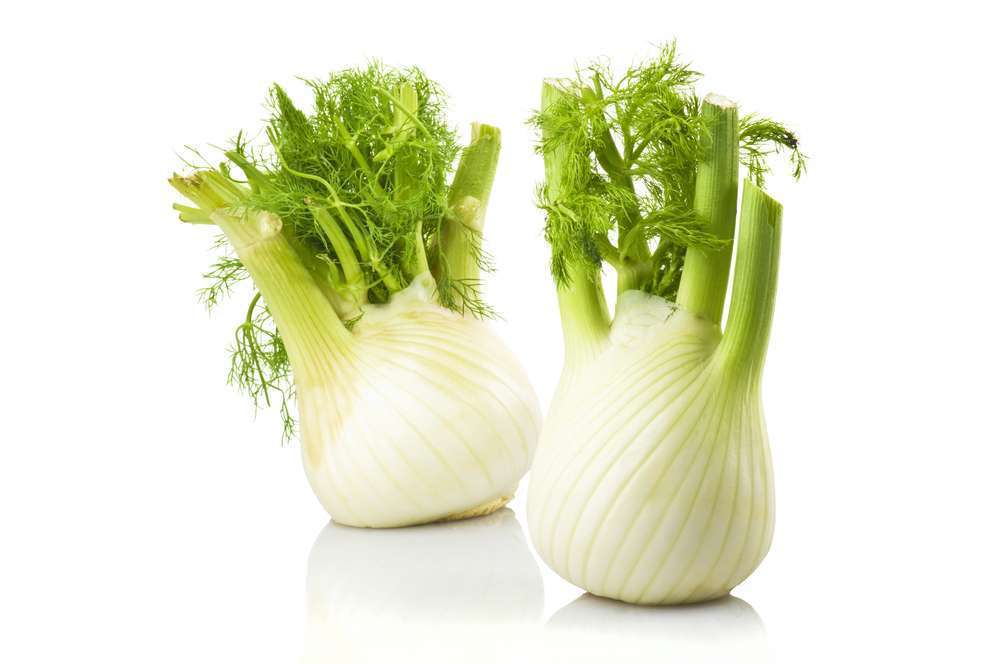Content:
Common thyme has long been known as a medicinal plant used not only in folk but also in traditional medicine. Not so long ago, the plant began to be used as a seasoning in cooking, as well as a component of perfumery compositions. Modern landscape design is also not complete without thyme. It is unpretentious and does not require special care, so even beginners can grow it.
Description
Thyme is a perennial semi-shrub type. In total, there are about 350 species of this plant, distributed throughout the Eurasian continent. It is appreciated for its essential disinfecting effect, which is achieved due to the increased content of oils. The herb is indicated for inflammatory processes in the body, as well as disorders and pathologies in the activity of the liver, gastrointestinal tract, and lungs.
The stem height of common thyme does not exceed half a meter. The stems are tetrahedral, distinguished by a grayish-brown color. The leaves are small, their shape is obovate, the color is grayish-green. Flowers represent an intermittent inflorescence of small lavender flowers, collected in 3-6 pieces. At the end of flowering, very small brown nuts are formed. Seed germination lasts for 8 years.
The description of the plant indicates that thyme prefers rich calcareous soil for cultivation. He needs good lighting, preferably growing in an open area. Thyme does not have good winter hardiness, therefore, in the northern regions it needs a mandatory shelter.
Specifications
The composition of the green mass of thyme contains essential oil in the amount of 0.6-1.2%. In addition, the green parts of the plant include:
- ascorbic acid;
- flavonoids;
- carotene;
- tannins;
- mineral salts.
Since ancient times, unusual properties have been attributed to thyme. Even in ancient Egypt, the herb was used to perform sacred rituals. And in Greece, the plant was sacrificed to the goddess of beauty Aphrodite. Due to its rich chemical composition, the ancient monks included thyme in the balms known at that time. In Russia, creeping thyme is found mainly, which is no less useful.
Application
Common thyme is known primarily as a medicinal herb. In pharmaceuticals, an essential oil extracted from a plant is used. The bactericidal effect is achieved by a substance called thymol. It is used in dentistry as a disinfectant and anesthetic. Thyme leaves, both dried and raw, are used to treat such diseases:
- bronchitis;
- cough;
- disorders of the digestive system;
- diseases of the nervous system;
- sinusitis;
- as a diuretic.
Thyme is also used to treat rheumatism. In children, diathesis is treated with this medicinal plant.
Thyme has found application in cooking, due to its specific strong smell and burning bitter taste. Leaves serve as an addition to meat sauces, game, egg and fish dishes, as well as vegetables. With the help of thyme, flavored dishes made from legumes. On an industrial scale, this amazing plant is used to flavor sausages, vinegar, mayonnaise, marinades and even cheese.Dried thyme herb is used to flavor expensive teas. Indeed, it is thyme tea that enjoys particular popularity and demand in the market.
Common thyme varieties
In Russia, it is allowed to cultivate the following varieties of common thyme:
- Aibolit;
- Bogorodsky Semko;
- Citric;
- Rainbow;
- Romanovsky.
They differ not only in the size of the bushes, but also in the shape of the leaves, the color of the inflorescences. For example, the Aibolit variety is considered early, tends to build up abundant green mass. The bushes reach a height of 30 cm.
Lemon thyme has an interesting property. If you try to chew its leaves, you immediately feel a burning lemon flavor. The inflorescences of this variety are white, and its height does not exceed 30 cm. Rainbow thyme grows even less, but the leaves contain a storehouse of useful vitamins and minerals.
Bogorodsky Semko is a representative of mid-season varieties. It is recommended to grow it in one place no more than 5 years. In the climatic conditions of the middle lane, it is grown in seedlings. The Romanovsky variety is classified as a vegetable and is used mainly in fresh cooking. Plant with early ripening, productive, unpretentious.
Landing
Thyme is grown on loose and well-drained soil. The ornamental qualities of the plant will depend on the degree of fertility. Sour soil must be lime before planting plants. The texture of the earth should be light. Previously, all weeds are removed on the site, fertilizers are applied (potassium salt, superphosphate, ammonium nitrate), and the soil is dug up.
Thyme is best planted in beds where cucumbers, root vegetables, and cabbage grew before. If the growing season in the region is short, then it is recommended to pre-grow seedlings. Sowing is done in early April. This is done in boxes or in plastic greenhouses. For planting one square meter of a plot, no more than 0.1 grams of seeds will be needed. As soon as the young plants have 3 true leaves, they are dived into separate pots. By the way, sowing can be done immediately in pots, distributing 4 seeds in each. In the future, thinning may be needed.
If the air temperature is maintained at 20 ° C, then thyme shoots appear after a couple of weeks. After 1.5-2 months, the seedlings are planted in open ground, leaving a distance of about half a meter between the rows, and 20 cm between the bushes. In the southern regions, sowing seeds directly into the open ground is not excluded. This is done in early spring, and seedlings appear a month later. In the future, the seedlings are thinned out, leaving a distance between them, as in the previous scheme. When transplanting, do not allow a strong deepening of the root collar.
At first after planting, thyme grows slowly and needs careful care. The plantings are regularly loosened, weeded and removed. Such procedures are necessary during the entire first year of life.
Reproduction
Common thyme propagates vegetatively (by dividing a bush or by cuttings). The division of the bushes is carried out in the spring. For this, four-year-old bushes are used. Cutting and subsequent rooting of cuttings takes place in the summer. This is done in a film greenhouse or nursery. Further planting of thyme is carried out according to the scheme described above.
In areas with a harsh winter climate, thyme is cultivated as an annual, in other cases - as a perennial. It is recommended to grow a culture in one place no more than 5 years. If there is a threat of freezing of plants, then for the winter it is required to insulate and cover the beds.
Top dressing
Two years after planting, thyme bushes need feeding. For this purpose, both organic and mineral fertilizers are applied. Every spring, 20 grams are embedded in the soil. ammonium nitrate, 15 gr. superphosphate, 10 gr.potash salt for every square meter of land. A positive result is brought by the introduction of lime or dolomite flour into the soil.
Prevention and treatment of diseases
Provided that damp and rainy weather persists for a long time, common thyme can be affected by rust. A sign of the disease is the appearance of brownish-rusty spots on the leaves, as well as slightly convex pads. In order to prevent and prevent the development of this ailment, the beds must be constantly kept clean, and shoots with the first signs of infection must be immediately removed.
Thyme becomes a delicacy for some pests. Most often they are interested in aphids. The insect infects leaves and shoots, sucking nutritious juice from them. Shrubs are greatly weakened and may even die. In order to prevent planting, it is recommended to pollinate with tobacco dust or mix it in half with lime.
Additional care advice
In the climatic conditions of the middle lane, ordinary thyme is most often grown as an annual. True, it is unlikely that it will be possible to harvest a good harvest from such plants. After a couple of years, each bush gives up to 300 grams of greenery. But after 3 years of cultivation, the yield begins to fall again. Harvesting is done several times per season. The first time the upper parts of the plant are cut off at the end of May - beginning of June. After that, the beds are fertilized by adding mineral dressing.
In order to stock up on useful grass for future use, it is dried in attics or under well-ventilated awnings. In the southern regions, conditions even allow harvesting thyme seeds. For this, biennial plants are suitable, which can produce seed up to four years of age. Ripe seeds fall off well, therefore it is worth cutting off the shoots as soon as the seed box turns brown. Then the stems are dried in the sun.
Pharmacognosy has long been studying such a plant as common thyme. A lot of its healing properties are already known, a positive effect on the human body has been proven. Despite this, the plant also has a contraindication, therefore, before using it, it is recommended to consult a doctor. This is especially true for people suffering from chronic diseases. Thyme has found application not only in medicine, but also in cosmetology, cooking, and landscape design. It is quite unpretentious and has good decorative qualities, and even a novice summer resident can cope with its cultivation.
